Kia EV5 GT-Line AWD 2025 review
Expensive, inefficient and unpleasant to drive, the electric EV5 GT-Line falls short of Kia’s modern product standards
When a brand releases a string of impressive new models, it sets a benchmark against which all future efforts will inevitably be judged. Kia now faces that problem.
The midsize EV6 and three-row EV9 electric SUVs caught many by surprise with their dynamic polish and technical sophistication, standing proudly alongside a growing line-up of capable combustion crossovers. Even the upcoming Tasman diesel ute, with its polarising design, hasn’t shaken our confidence in the brand’s overall direction.

But the EV5 is an outlier. It might share its EV prefix with the EV3, EV6 and EV9, but this boxy 4615mm-long midsizer shares little with its accomplished siblings.
Rather than using the well-regarded Hyundai Kona EV platform (EV3) or full-fat 800-volt e-GMP architecture, the EV5 borrows a diluted 400-volt version of that electrical backbone bolted onto a simplified and electrified version of the Sportage and Sorento platform, called N3-eK.
The cost-cutting doesn’t stop at platform level. The EV5 is the first Kia sold in Australia to be built on a Chinese production line.

It also uses Chinese batteries—lithium iron phosphate (LFP) packs that are cheaper, heavier, and less energy-dense than nickel-based cells, but more stable. They’re assembled by FinDreams, a subsidiary of arch-rival BYD.
Kia has also made the EV5 fundamentally front-wheel drive to reduce complexity and cost. Two battery sizes are offered, and the smaller-pack EV5 Air (with around 400km range) lands sharply at b driveaway—undercutting the rear-drive EV6 Air by a huge margin. That car starts at $72,590 (about $78,500 driveaway) and offers 528km of claimed range.
Even the flagship EV5 GT-Line AWD we’re testing comes in cheaper than the entry-level EV6—at $75,990 driveaway. Like the mid-tier Earth ($64,770), GT-Line adds a smaller rear motor and a large 84kWh usable battery that’s supposed to deliver 470km of range.
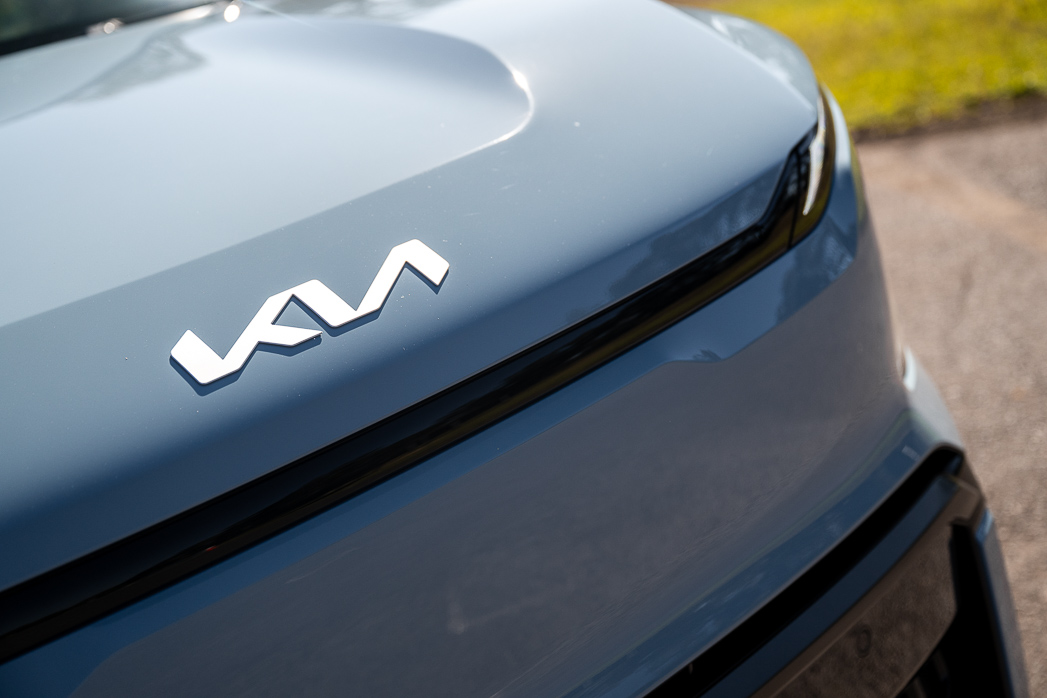
But there’s a catch. While the EV5 undercuts Kia’s other EVs, it doesn’t take long to realise that the EV6 and EV9 aren’t price-competitive. The segment’s sales leader, the newly updated, China-built Tesla Model Y is bigger, better equipped, and offers 466km of range from $58,900, before on-roads.
Even premium brands are starting to punch down into EV5 territory. Mini has lobbed its bigger, German-built Countryman EV into the mix from $64,990 before on-roads. And that’s before you consider capable Chinese newcomers like the Xpeng G6, which starts at $54,800.
We’ve started this review with pricing, because that’s the EV5’s supposed advantage. This car is meant to be a clever play from Kia—cutting manufacturing costs while still delivering the design, engineering and value we’ve come to expect from the brand’s high standards and long warranty. At the very least, it should drive properly. Right?

Sadly, no. The EV5 isn’t cheap enough—and it doesn’t drive well enough, either. Yes, it’s well-sized and packaged for families, with decent infotainment and connectivity. But core weaknesses in efficiency, ride and handling, and driver assist tuning threaten to damage Kia’s growing EV reputation.
What are the EV5 GT-Line’s features and options for the price?
A national driveaway price campaign for the Kia EV5 remains in force, with the GT-Line sitting atop the four-trim tree. Costs lift as buyers jump up the range, with the Air Standard Range’s initially attractive $56,770 sticker rising dramatically to our GT-Line tester’s $75,990 all-in price.

The EV5 GT-Line is a midsize electric SUV with a large battery, reasonably generous equipment and a respectably powerful dual-motor powertrain. That means it competes with the following vehicles at the time of writing—prices are before on-road costs, unless indicated:
- XPeng G6 Long Range: $59,800 (RWD only)
- BYD Sealion 7 Performance: $63,990
- Tesla Model Y Long Range All-Wheel Drive: $68,900
- Smart #3 Brabus: $70,900
- Volkswagen ID.5 GTX: $72,990
- Cupra Tavascan VZ: $74,490
- Toyota BZ4X AWD: $74,990
- Kia EV5 GT-Line: $75,990 driveaway
- Mini Countryman SE Favoured: $75,990
- Volvo EX40 Ultra Twin Motor Performance: $81,990
- Skoda Enyaq RS: $83,990
- BMW iX1 xDrive30 xLine: $86,800
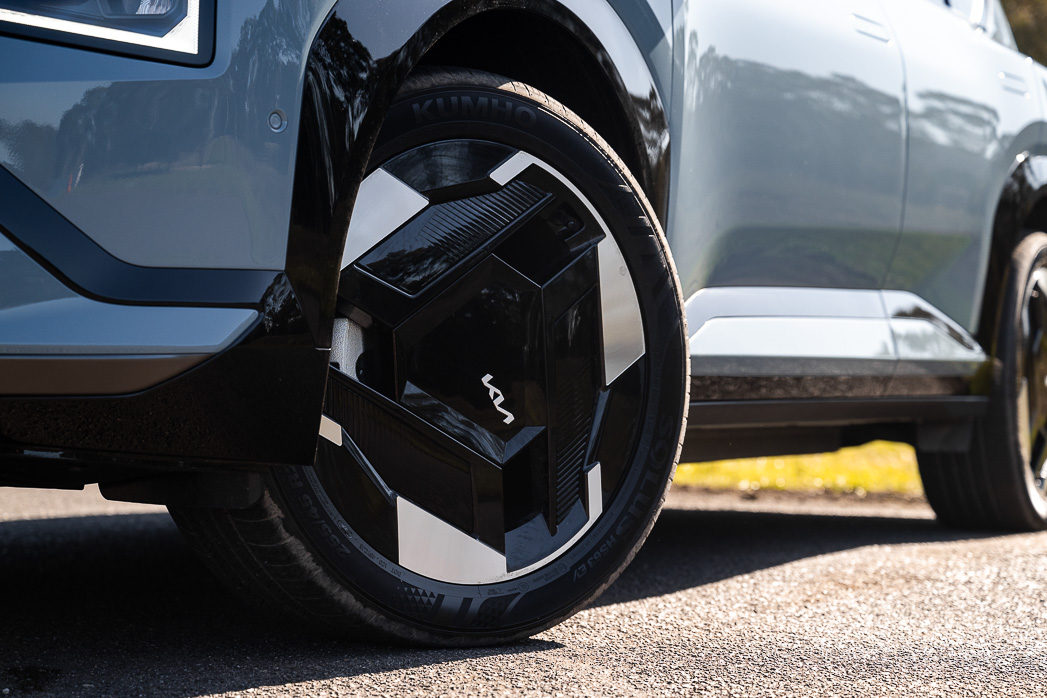
The EV5 GT-Line includes the following standard kit in Australia:
- 230kW/480Nm dual-motor electric powertrain (all-wheel drive)
- 84.0kWh (usable) lithium iron phosphate battery
- 20-inch silver and black alloy wheels with 255/45 R20 Kumho or Nexen EV tyres
- Solar glass for the windscreen and front windows
- Privacy glass for the rear windows and tailgate
- Multi-face reflector LED headlights
- LED tail lights with dynamic indicators
- Panoramic opening sunroof with sun blind
- Artificial leather seat upholstery in two-tone Smoky Black
- 12-way power-adjustable driver’s seat with two-position memory
- Eight-way power-adjustable passenger seat
- Heated and cooled front seats, heated rear outboard seats
- Heated artificial leather-appointed steering wheel
- Dual 12.3-inch displays with 5.0-inch climate monitor
- Eight-speaker Harman/Kardon premium stereo
- Four USB-C ports
- Wireless smartphone charger
- Dual-zone climate control air conditioning
- Kia Connect smartphone app with locking, climate and other features
- Front and rear parking sensors
- 360-degree parking camera with 3D mode
- Tyre repair kit
Compared to rivals, Kia does smartphone connectivity, cooled seats and effective climate control well. Notable omissions here include charging cables (available as accessories), but some rivals (notably the recently refreshed Tesla Model Y) pack more sophisticated suspension tech and superior audio for similar or less money.

Optional extras for the GT-Line are limited to paint colour. Clear White (with a matching roof) is the only standard colour; one-tone hues in Magma Red, Tide Blue or Starry Night Black cost $600, while two-tone Snow White Pearl, Iceberg Green, Frost Blue, and Shale Grey (all paired to a black roof) attract a $775 premium.
Unlike the mid-tier EV5 Earth, which can be paired with lush (but no-cost) Nougat Beige seats under some exterior colours, the GT-Line is only available with Smoky Black vinyl.
How does the EV5 GT-Line drive?
We’ve come to know how most modern Kias drive. They tend to fall into one of two camps: competent and compliant (like the combustion Sportage and Sorento), or enjoyable and sophisticated (like the EV6 and EV9). The new EV3, fresh off the boat for Australia, joins the latter group.
Which makes it even more perplexing that the midsize EV5 — entering the most hotly contested part of the EV market— misses both camps. Its ungainly handling sees Kia chalk up a rare dynamic misstep, one that even a local suspension tune hasn’t been able to salvage.

The EV5 is available in single-motor (Air) or dual-motor form (Earth and GT-Line), with two lithium iron phosphate battery sizes: 64.2kWh usable for the Air Standard Range, while all other variants get an 84.0kWh usable battery. Having tested the full EV5 range we reckon less is more, with the light, front-drive Air feeling the least compromised of the lot.
At the other end of the range, a purchase becomes harder to justify. The dual-motor EV5s are at least respectably powerful, with 230kW and 480Nm combined. The AWD powertrain never feels sluggish or excessive — its 6.3-second 0–100km/h claim is about right for a family EV.
But with about two-thirds of the power driving the cornering wheels torque steer is clearly present in the dry and even more pronounced in the wet. The GT-Line’s wider 255/45 R20 tyres help manage this better than the Earth AWD’s narrower setup.

Throttle response is fine, but every control surface in the EV5 feels dulled—like there’s a layer of treacle between driver and car. It lacks the intuitive flow of e-GMP-based models like the EV6 and EV9, which benefit from clearly superior hardware and software.
Prod the throttle and there’s a noticeable delay before anything happens. Lift off in one-pedal mode, and again—pause—then regen kicks in, with the body eventually leaning forward as speeds slow.
Low-speed ride quality is acceptable in town, though there’s a firm edge thanks to the low-profile tyres and 20-inch wheels, which struggle to absorb square-edged potholes and joins.
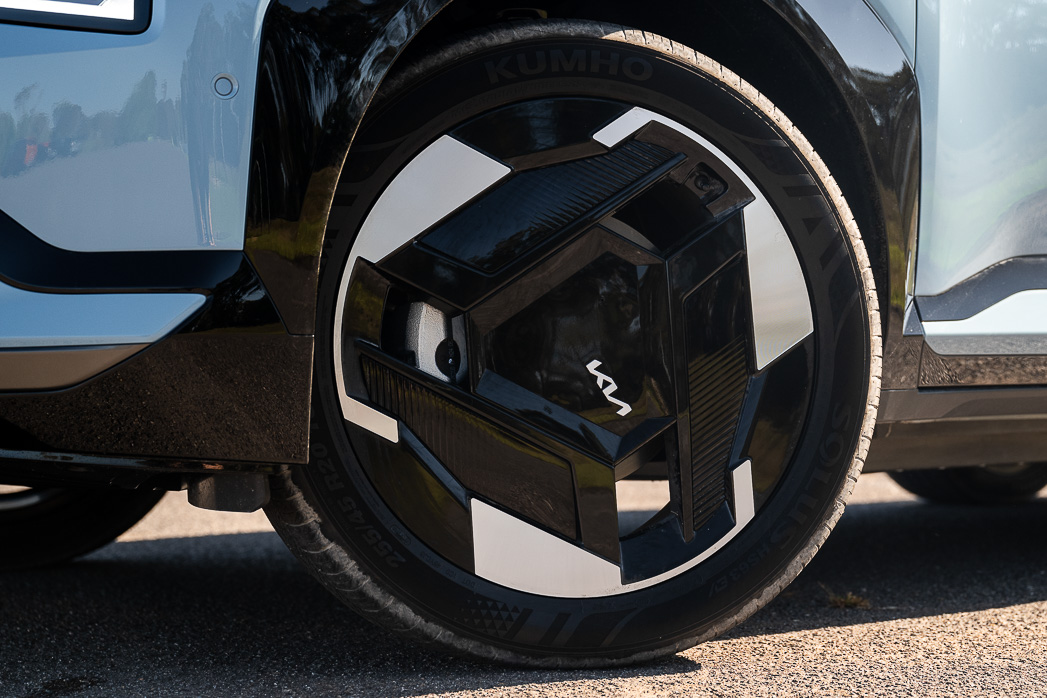
Body control falls apart as speeds rise and the road gets twisty or rough. Hit a mid-corner bump and the EV5 bobs, floats, and pitches as it loses composure.
The dampers struggle to reset between hits, sometimes running out of talent entirely and causing the EV5 to skip sideways. When that happens, the rear can unload and go light—just as stability control shows up a half-step late.
Put simply, the EV5 GT-Line is unpleasant on poor surfaces and winding roads. That might not matter for urban rideshare duty — it’s already popular for that kind of driving in Sydney and Melbourne — but take it on a B-road and the Kia can be genuinely nauseating.

Rivals don’t behave like this — even the more forgettable ones. We drove the XPeng G6 over the same Australian Capital Territory urban and country testing loop on the same day, and it handled the route with considerably less fuss. Others, such as the Skoda Enyaq, are just outright excellent in these kinds of settings.
What is the EV5 GT-Line’s interior and tech like?
A spacious and well-packaged interior is the EV5’s strongest suit. It looks boxy — though not unattractive — and its upright shape hides one of Kia’s best efforts yet when it comes to maximising room. First- and second-row passengers have plenty of space, and you can carry five if needed.
Spend time inside the EV5 — even this flagship GT-Line — and it’s clear that this model has been built to a price, if not necessarily in a cheap-and-nasty way. Beyond the key touchpoints like the artificial leather steering wheel and seats, most materials are hard and durable, though the plastic graining is decent enough.
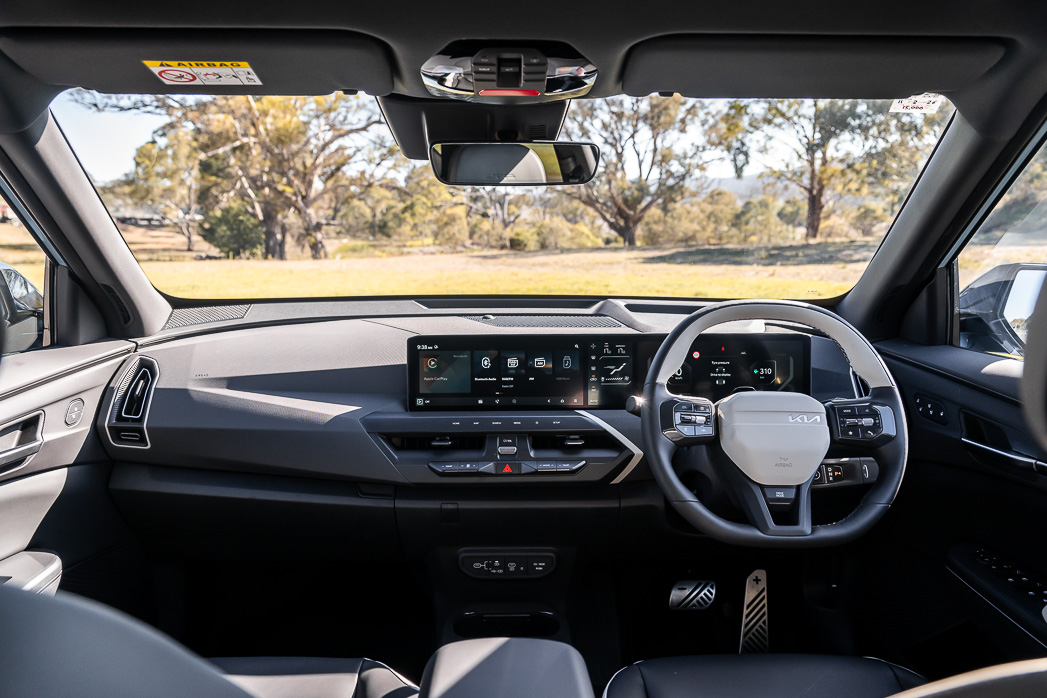
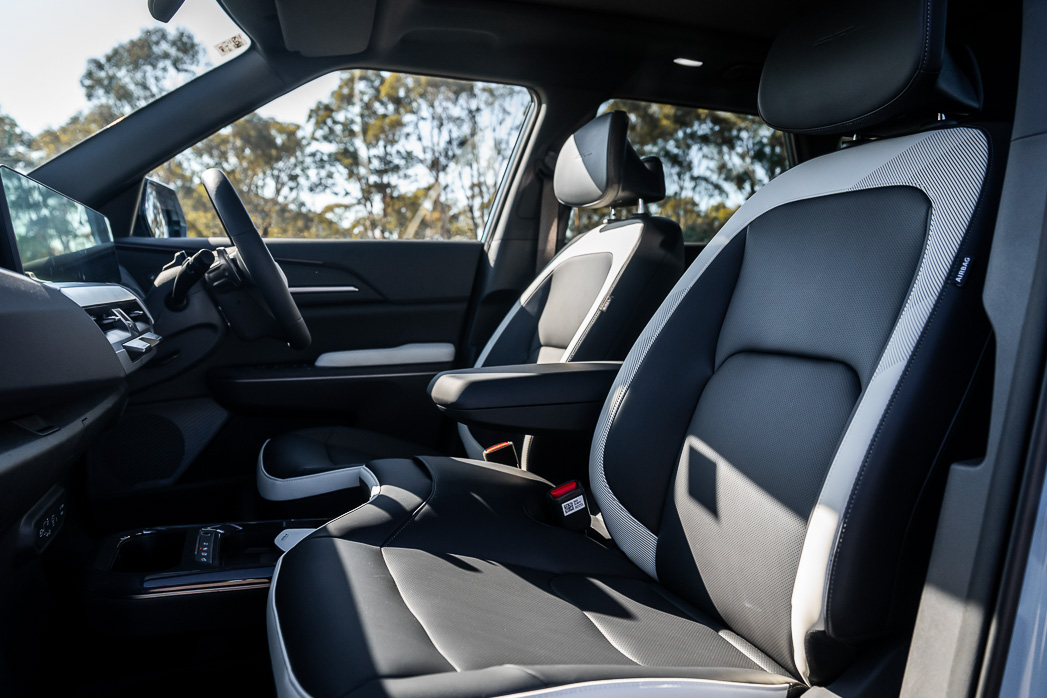
The only problem with the EV5 being built to a price is that it’s not cheap! As we noted in the Value section, this Kia isn’t among the most affordable cars in the class—and while Chinese rivals like the XPeng G6 and BYD Sealion 7 don’t pretend to be luxurious, they still manage a more consistent veneer of softness inside.
Still, we like the artfully embossed — and pleasingly squidgy — dashboard. The use of geometric elements and interesting shapes lifts the EV5’s cabin experience. Ergonomics are mostly sound: the driving position is high with excellent visibility, and both the shortcut-laden steering wheel and column-mounted shifter fall easily to hand.
The sensible dash layout includes two crisp 12.3-inch displays, split by a 5.0-inch climate panel that feels like an afterthought—it’s hidden behind the steering wheel rim for many drivers. We’re always in favour of separate climate controls, but these would be better as physical buttons, mounted below the screens.

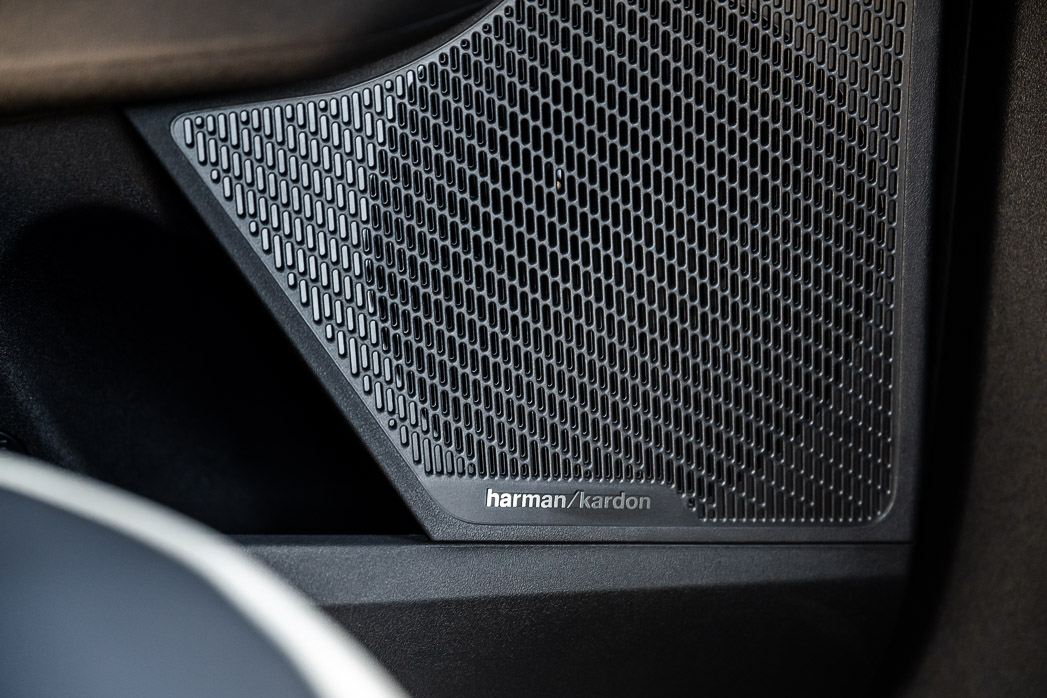
Kia’s CCNC infotainment system has a logical layout, though most users will opt to pair their smartphone using wireless Apple CarPlay or Android Auto.
There are four USB-C ports for charging, while the GT-Line’s Harman Kardon-branded audio system delivers only middling clarity from its eight speakers.
Storage for odds and ends is generous, and the flat floor—thanks to the EV5’s dedicated architecture—helps create a strong sense of space. We’re also fans of the panoramic sunroof: while many EVs have fixed glass panels, the GT-Line’s actually opens (a rarity) and includes a powered sunblind to reduce glare. Excellent.
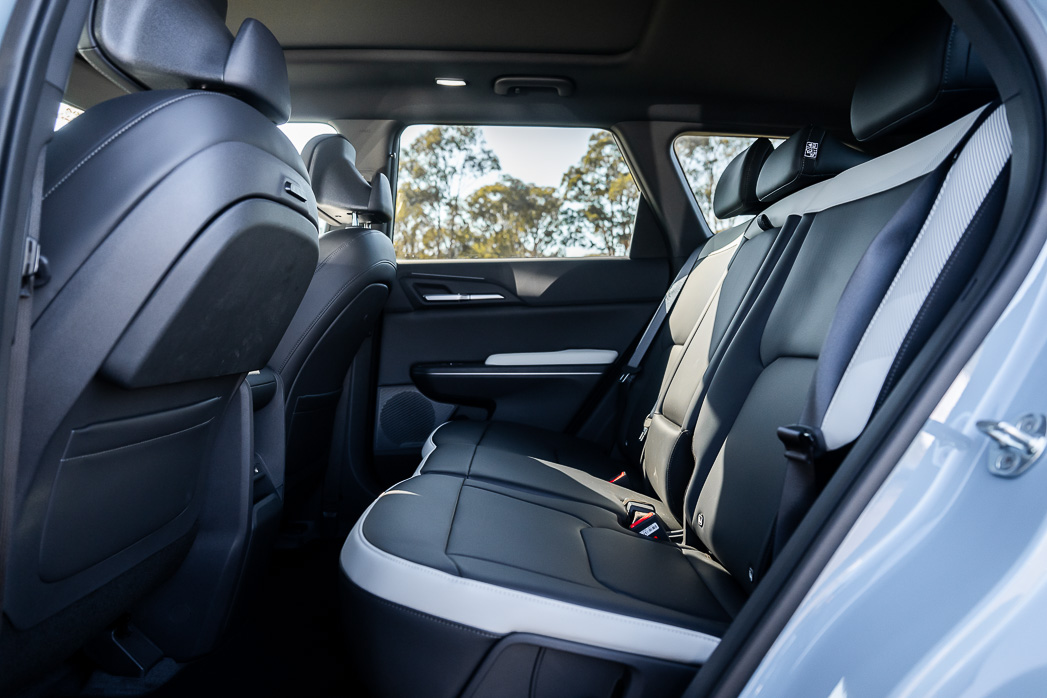

In the back seat, space remains generous with excellent legroom. The second row doesn’t slide on rails—which would be a handy feature—but it does recline, and seat-back USB-C charge points keep devices powered up on the move.
The powered tailgate opens hands-free if you wait behind it with the key in your pocket for a few seconds (or you can simply push the relevant button). Once open, it reveals a large, square space.
Capacity is rated at 513 litres to the window line—decent for an SUV of this relatively compact size.
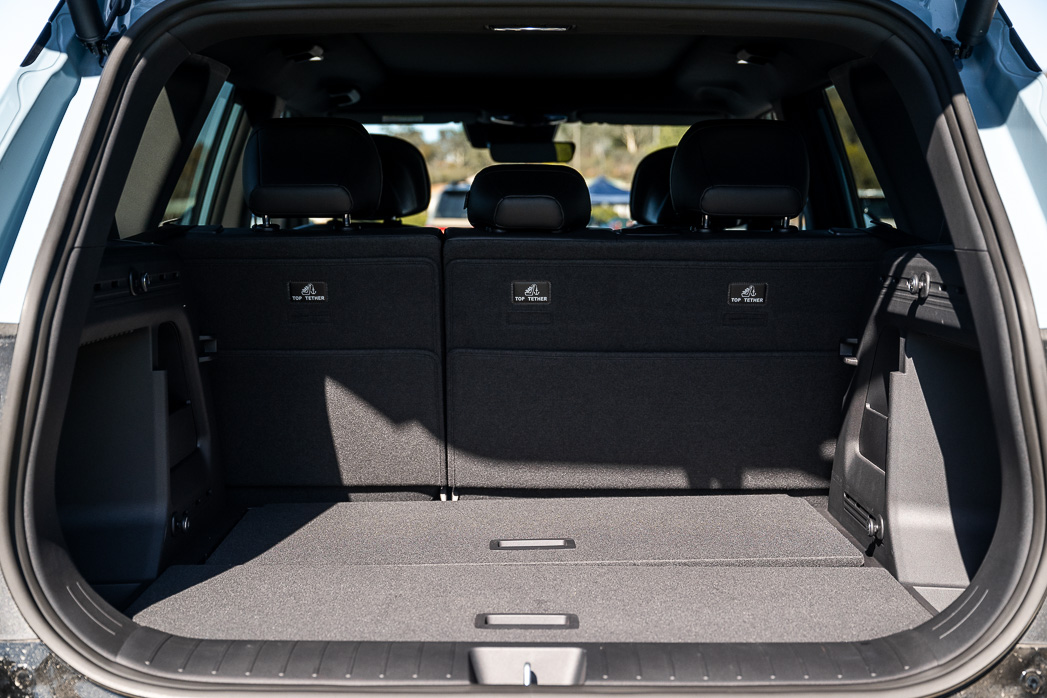
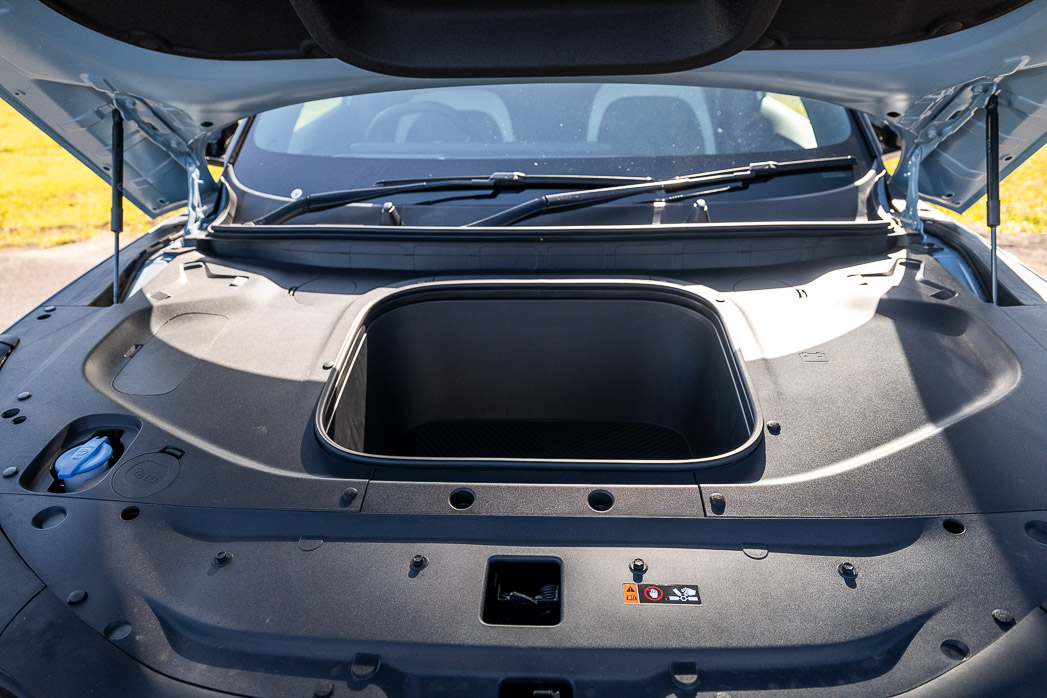
It’s a generous space, though we’d suggest adding a net—bags slide around easily on the low-pile carpet, knocking into the hard plastic cargo walls. There’s also some underfloor storage and a novel (if slightly over-engineered) split-level organiser that lacks a clear purpose.
There’s also a frunk, opened via a traditional bonnet release in the driver’s footwell. It adds another 67 litres of space—perfect for storing charge cables, which aren’t included in the purchase price but can be bought as accessories or on the aftermarket.
Is the EV5 GT-Line a safe car?
All too often, Chasing Cars testing reveals vehicles with high safety scores — but semi-autonomous features that simply don’t work well in the real world. The EV5, which scored five stars from ANCAP, isn’t the worst (or only) offender—but at least two of its safety systems are oversensitive, while another behaves haphazardly at best.
The biggest problems here are the speed limit warning and driver distraction detection systems. Both regularly misread real-world scenarios and neither needs to be militant as it is to tick the five-star box.
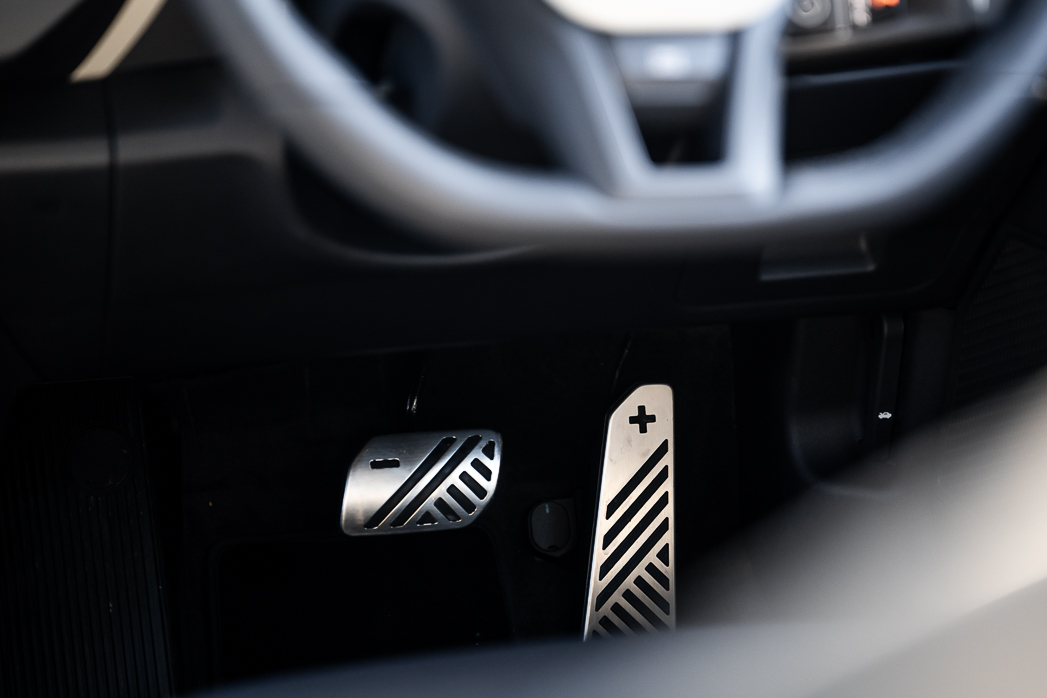
Take the speed warning system. It uses a front-facing camera to read signage—and if you exceed the limit by even 1km/h, it sounds off with loud bongs inside the cabin. Leaving the Chasing Cars garage means passing a private 5km/h sign in the carpark. Pull out onto a 50km/h suburban street, or the nearby 80km/h expressway, and it continues to bong incessantly.
Within moments, you’re driven to distraction. Then comes the hunt to disable the system—Kia’s reduced this to four presses, but that’s still four too many. Australian law doesn’t require this. In Europe, where speed warnings are mandatory, some brands offer a simple one-button deactivation.
Then there’s the driver distraction monitor—a pod perched on top of the steering column, constantly watching your eyes. In theory, that’s fine. But even a quick glance at the trip computer or next nav instruction can trigger more angry bongs. So off you go, digging through menus to switch off another system—an act that’s distracting, and arguably dangerous, in itself.

We also noted that the EV5’s lane-centring system behaves inconsistently—sometimes tugging at the wheel even when the driver is holding a reasonable line. Most Kias are fine in this department, so the lack of polish here really stood out.
Back to those quantitative ANCAP scores—the EV5’s results sheet looks admirable:
- 88 percent for adult occupant protection (35.47/40 points)
- 86 percent for child occupant protection (42.41/49 points)
- 74 percent for vulnerable road user protection (46.96/63 points)
- 82 percent for safety assist tech (14.79/18 points)
On the plus side, the adaptive cruise control works smoothly, and the blind spot camera system remains best-in-class. It’s a shame those cameras haven’t trickled down the EV5 range—they’re exclusive to the GT-Line. Also worth noting: there’s no reverse AEB.
What are the EV5 GT-Line’s ownership costs?
Not all EVs are created equal. The thirsty ones can actually cost as much—or more—to run than hybrids or efficient petrol cars, especially on road trips or if you don’t have access to cheap overnight charging at home.
That’s the camp the dual-motor EV5 GT-Line falls into. Its energy consumption is outrageous—particularly on the highway, where 110km/h cruising and blunt aerodynamics conspire to drag efficiency way down.
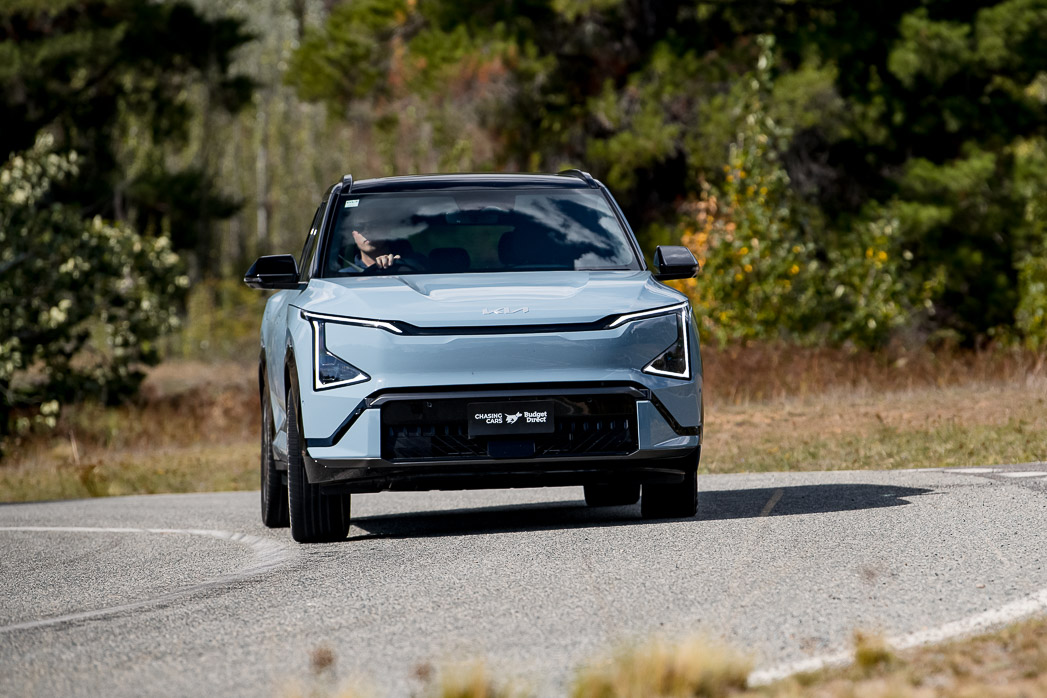
The larger of the EV5’s two batteries packs a usable 84.0kWh—about 12 percent more capacity than a Tesla Model Y Long Range. But the lithium iron phosphate chemistry, while safer, comes with a trade-off: LFP packs are heavier and less energy dense.
It’s a perfect storm. On the highway, our EV5 GT-Line averaged 25.0kWh/100km—delivering a real-world road trip range of just 336km from full to flat. But few drivers run to empty, meaning the EV5 GT-Line’s actual driving range sits below 300km. A comparable Tesla Model Y Long Range, with more power, will do over 100km more while using just 16.0kWh/100km.
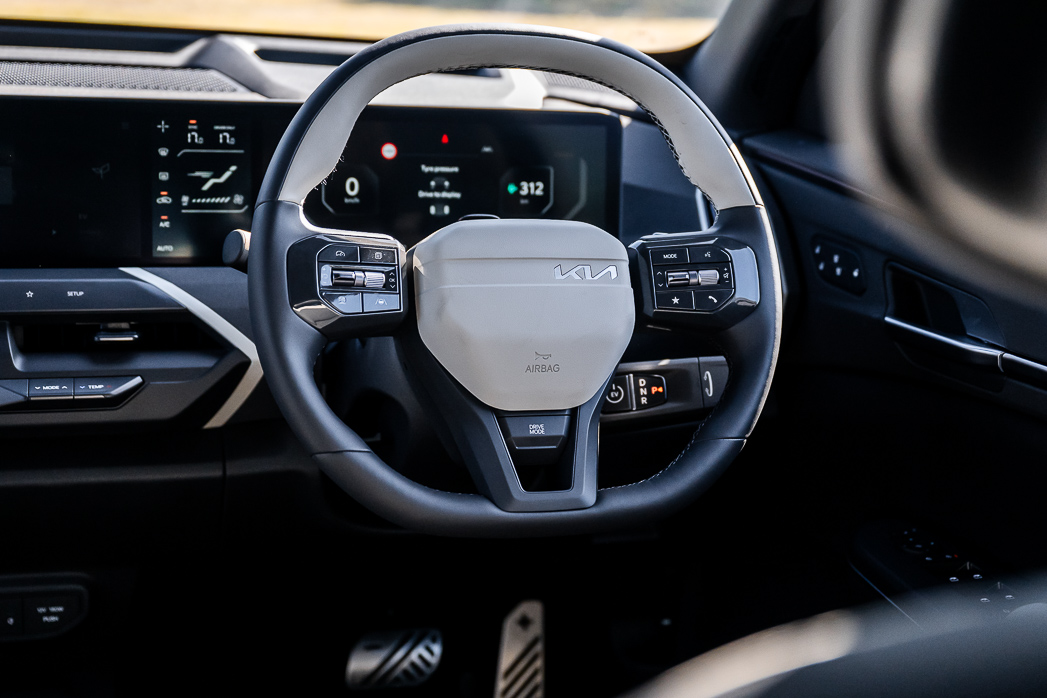
Some EVs make up for poor efficiency with ultra-fast charging. Not the EV5. Its watered-down e-GMP platform runs on a 400-volt system—and a slow one, at that. Peak speed is 140kW, but a 10–80 percent session takes 37 minutes and averages just 94kW, replenishing 235km of highway range.
Inefficiency on the highway coupled with slow(ish) charging wastes your time—but it is also costly. At 25.0kWh/100km, every 100km on the highway is costing $16-20 in the EV5. A hybrid or diesel Sorento using 7.0L/100km would cost perhaps $13-16. Similar, sure—but they’ll drive much further on a tank.
In town, consumption improves—but it’s still thirsty, averaging 21.0kWh/100km for a low-speed range of around 400km against its claim of 470km combined.

On the plus side, servicing isn’t expensive. Kia offers pre-paid plans for three, five, or seven years, with the five-year/75,000km pack costing $1535 ($307 per year). Still, it’s unusual for an EV to require annual servicing—and that’s exactly what the EV5 demands.
Kia’s seven-year, unlimited-kilometre vehicle warranty remains generous. However, the EV5’s high-voltage component is only covered for seven years or 150,000km—slightly shy of the eight-year, 160,000km benchmark common in this class.
The honest verdict on the EV5 GT-Line
Simply put, we expect more from Kia than what the EV5 delivers. We know Kia can build great electric cars. The larger EV6 and EV9—both based on a more sophisticated and expensive platform—prove the point, delivering strong dynamics, good efficiency (in the EV6), and clever packaging (in the EV9).
Even the brand-new EV3—a size-down alternative to the EV5—is more polished, running on the good-to-drive Hyundai Kona architecture.
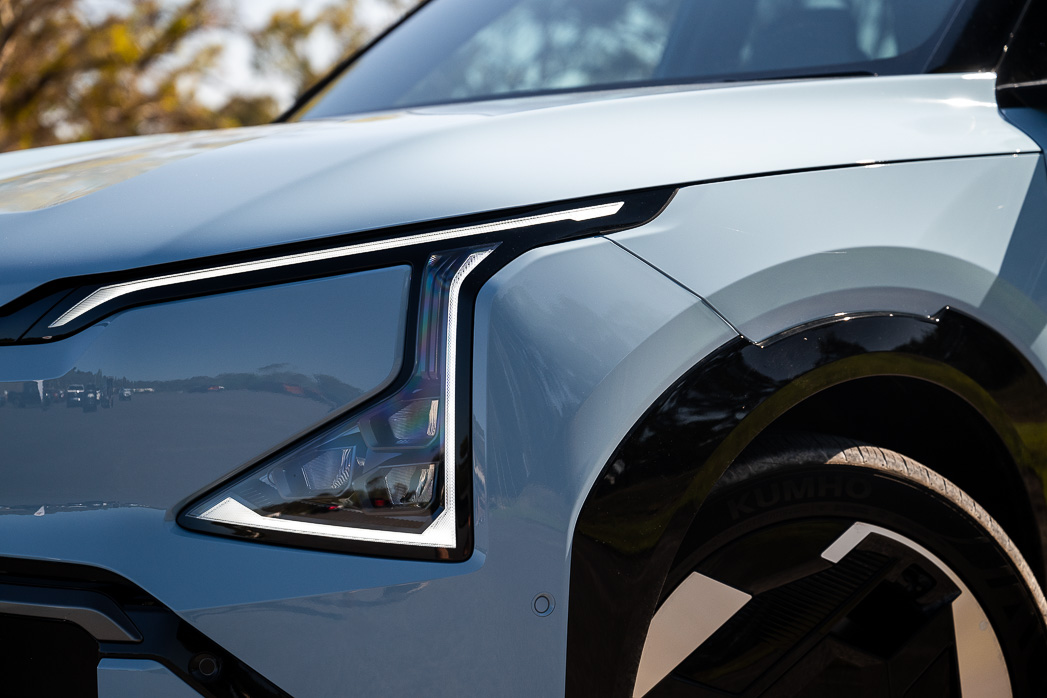
What’s gone wrong with the EV5? We’re still not entirely sure—though it may have something to do with it being the only Kia built on a third, separate EV platform.
At minimum, the EV5’s suspension and safety systems need a thorough rethink—because the Australian tuning effort hasn’t delivered a breakthrough despite talented people attempting to do so locally.
A rework might still happen. The EV5 hasn’t launched in Europe yet. It will soon, and European dynamic tastes align closely with Australia’s—sloppy ride and handling will be just as unacceptable over there as they are here.

The relatively high price of the EV5 — especially in GT-Line form — puts it well above the cost of the now-improved Tesla Model Y. That makes the purchase hard to justify.
Until such an upgrade arrives — and despite Kia’s solid reputation, decent cabin tech and admirable packaging — we’d steer clear for now.Should Kia make the changes we’re asking for, Chasing Cars will be first in line to reassess this SUV and its road test score.
Audi A3 2025 review
6 months ago

The face-lifted A3 presents like an S3 clone, though it doesn’t have the ticker to live up to its styling promise
Good points
- S3-alike looks
- Mature execution
- Liberal sportiness is enticing
- Nice power/economy balance
- Enthusiastic handling
Needs work
- Nothing like S3 pace
- Not a real hybrid
- No ’40’ 2.0L quattro option
- Sportback is pricey, Sedan is even pricier
- Hotter options out there for the money
Aussies love to look fast even if they mightn’t have the means — or even the want — to go fast. That, according to Audi Australia, is precisely why the newly face-lifted A3 looks almost precisely like its pricier and hotter S3 model mate.
Much like rivals BMW and Mercedes-Benz, Audi has seen more and more buyers ‘sportify’ humbler options off the showroom floor to a point — beginning some time ago — that athletic vibes, in spec and styling, has become standard issue fitment. But Audi’s revamped small hatch and sedan twins really take apeing faster siblings to the next level.
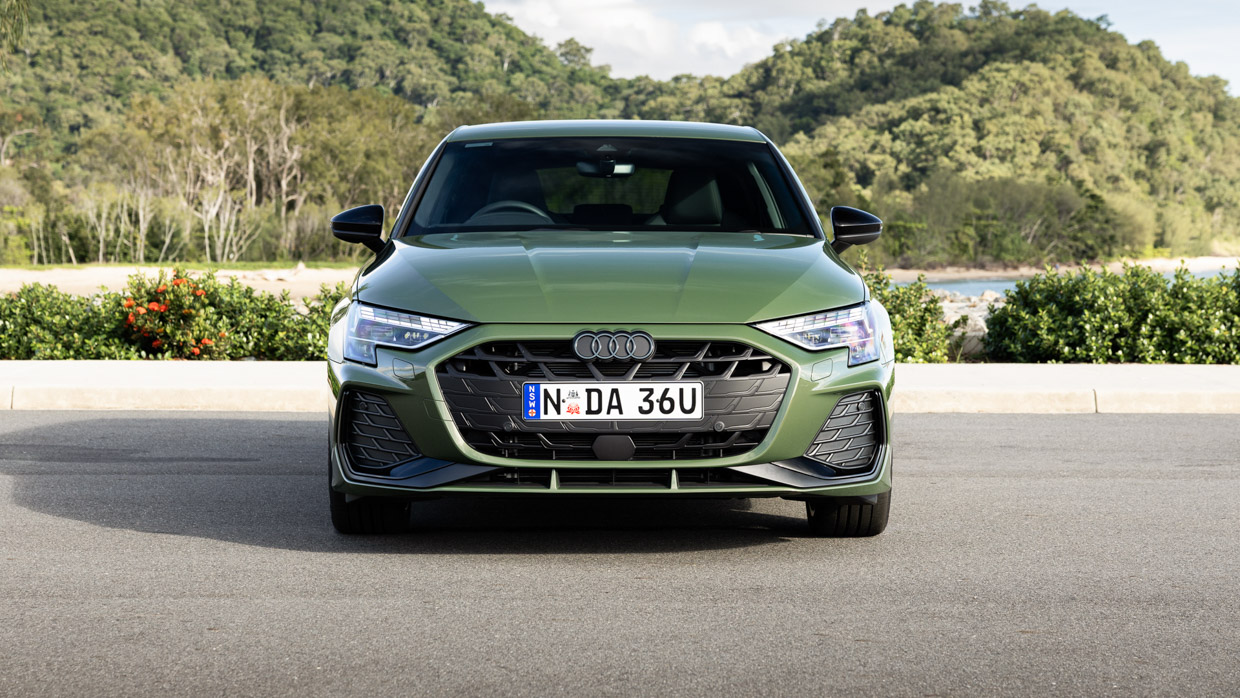
Don’t shoot the messenger (or, more accurately, the vendor), says Audi. It’s purely driven by customer demand. And Ingolstadt’s local arm-Down-Under knows A3 buyers well, having offered four generations of, it’s fairly argued, the premium small hatchback originator now for over the past 28 years. Some 65,000 of them, including sedan versions that arrived in 2014, have found homes in Australia.
Exterior design changes for the A3 face-lift are nuanced. There’s a softer grille, larger vents, new ‘digital signature’ headlights (with four animated patterns), more black detailing, two-dimensional badging and the return of conspicuous S Line logos after a backpedal from the red rhombus logo. New look 18s, a “wide-stance” rear fascia…all subtly toughening impact from 20 paces.
But it’s really the cabin that Xerox’s its big brother S3 with higher resolution than what it did in the outgoing spec.

The A3’s new regular-fit S Line bucket seats are dead-ringers for the pews in the also recently face-lifted S3, and Audi Australia had both models, in both body styles, at the recent A3/S3 launch program in Cairns, Queensland, where local media got to drive mild and wilder nameplates back to back.
Risky business, perhaps, because one might imagine that there’s a magnitude lift of purpose in the 245kW/420Nm two-litre quattro S3 — now with a host of go-faster kit in face-lift guise — in direct comparison to modest 110kW/250Nm of 1.5-litre bum-dragging A3 mediocrity. Stay tuned for our review of the swifter sibling coming soon…
The A3’s ‘35’ grade powertrain is unchanged in face-lift form, save for fuel efficiency. It’s 5.3L/100km claimed for either body style, where the pre-facelift was thriftier by around four-tenths of a litre for reasons not exactly clear.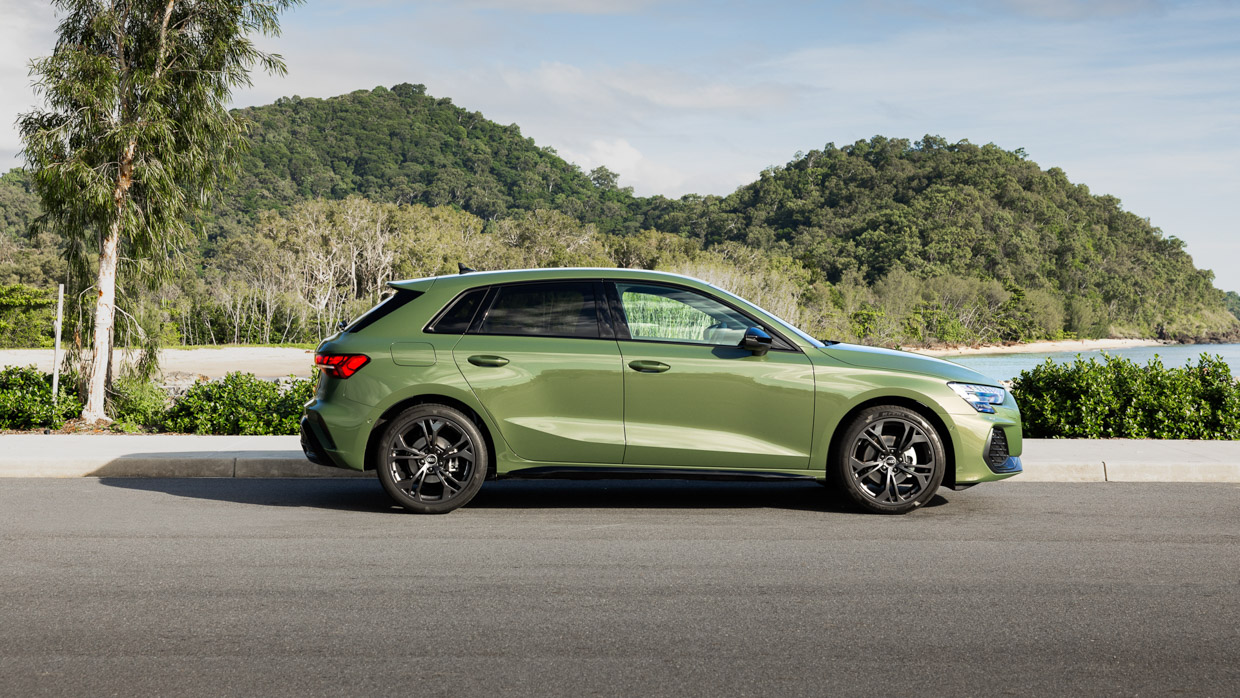
Equally murky is Audi’s old ‘mild-hybrid’ chestnut, a 48-volt belt-driven alternator/starter system which, for a long time, essentially only provided rolling stop-start functionality (and thus was not technically a hybrid at all).
This current ‘MHEV’ is said to “boost up to 9kW and 50Nm” though, without any electric motor per say, it’s a bit of head-scratcher as to actually how.
Absent from the revised line-up is the middling A3 40 grade, a now defunct recipe that blended 140kW and 320Nm with quattro drive as a missing link of sorts between the meek (A3 35) and the muscular (S3), while the properly monstrous (RS3) is yet to materialise with a refreshed face.
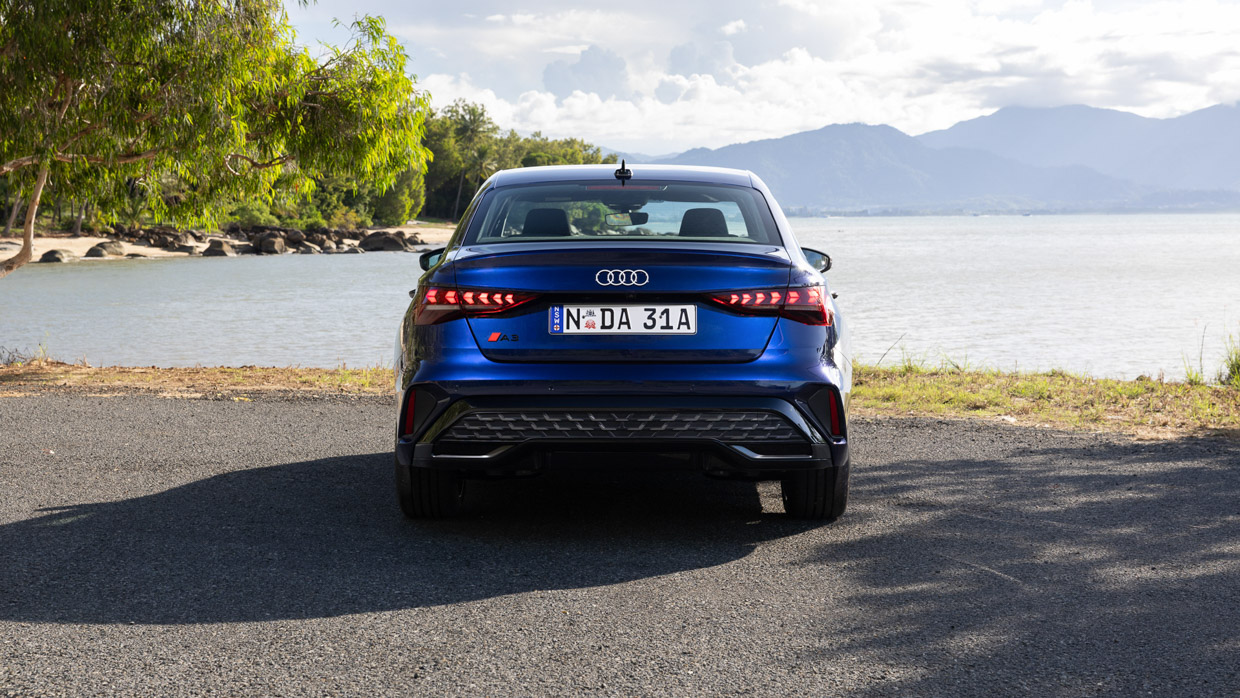
For the record, when the fourth-gen launched three years ago, the 40 ($52,900) wanted for a $6600 upcharge over the 35 ($46,300) in Sportback hatch form, with the sedan in either trim adding an extra $2500. But that was 2022…
What are the A3’s features and options for the price?
The 35 TFSI Sportback starts from $54,800 before on-roads, with the 35 TFSI Sedan version commanding $3000 more, at $57,800.
Why $3K more? Audi doesn’t exactly quantify, outside of a notion that the four-door body style is ‘positioned’ against the Sportback to appeal to a somewhat more mature buyer demographic.
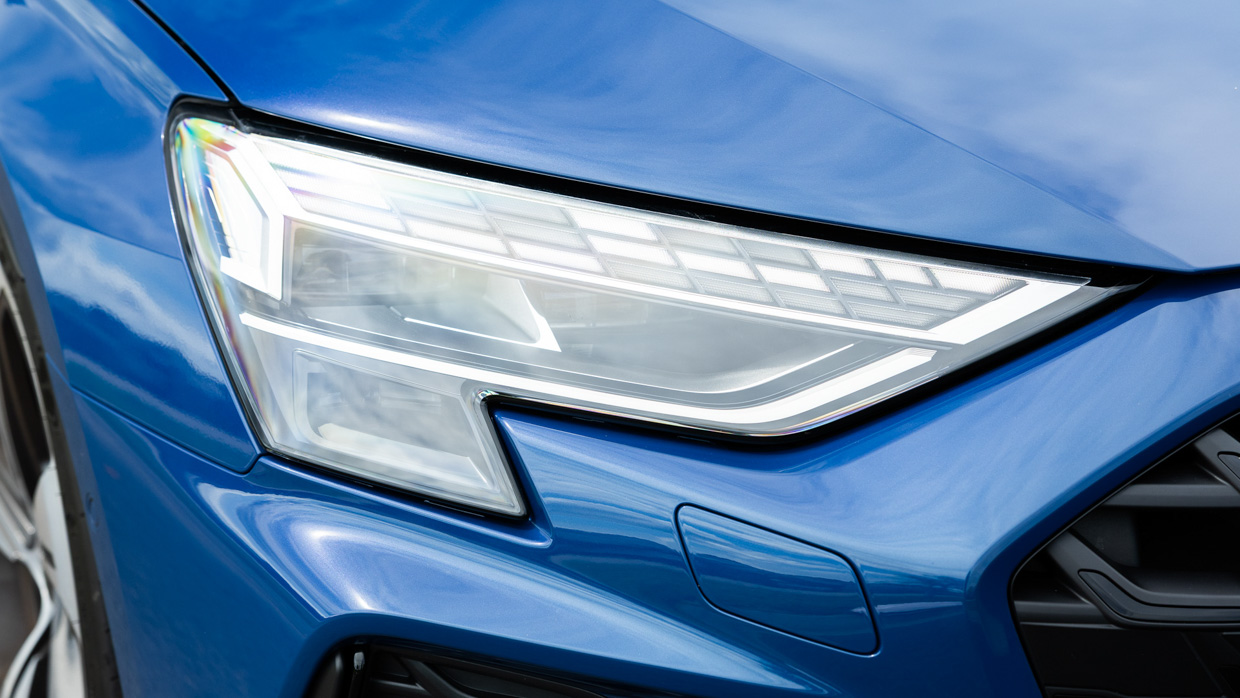
But the alarm bells are not merely that 35 trim has risen by $8500 — same powertrain, remember — since 2022 it’s that the 110kW 1.5L front-driver is now more expensive than the 140kW 2.0L quattro option was on debut.
To be fair, the facelift changeover in 2025 money is a more modest price hike of $4200 (Sportback) and $4700 (Sedan).
Audi does make a case that the face-lifted MY25 guise brings “around $10K of added value” to the features list.

New or revised specifications include:
- Standard S Line exterior
- 18-inch wheels
- High gloss exterior package
- Space saver spare wheel
- 12.3-inch Virtual Cockpit Plus instrumentation
- Standard S Line interior
- S Line heated front seats w/ electric driver adjustment
- Cloth/leatherette trim with embossing
- S Line steering wheel
- Black headlining
- Inlays in dark aluminium
- Three-zone climate control
- Storage and luggage compartment package
Carryover features from pre-facelift include:
- LED headlights with digital DLRs
- Gesture control electric tailgate (Sedan only)
- 10.1-inch MMI Navigation plus media

Option bundles include a Style Pack ($2000) with unique black-out wheels, trim and privacy glass, and a Comfort Pack ($1700) with heated/folding mirrors, electric front seat functionality and a 360-degree surround view camera. Individual options include leather-appointed seat trim ($1100), privacy glass ($650) and a sunroof ($2000).
How does the A3 drive?
Given the broad familiarity of the Volkswagen Group MQB Evo underpinnings — VW Golf Mk8, Cupra Formentor, Skoda Octavia, et al — it’s not surprising how polished and sorted the face-lifted A3 is on road.
Unlike the hotter S3, with its raft of technical changes, A3’s oily bits underneath carry over virtually unchanged since gen-four’s 2020 global debut.
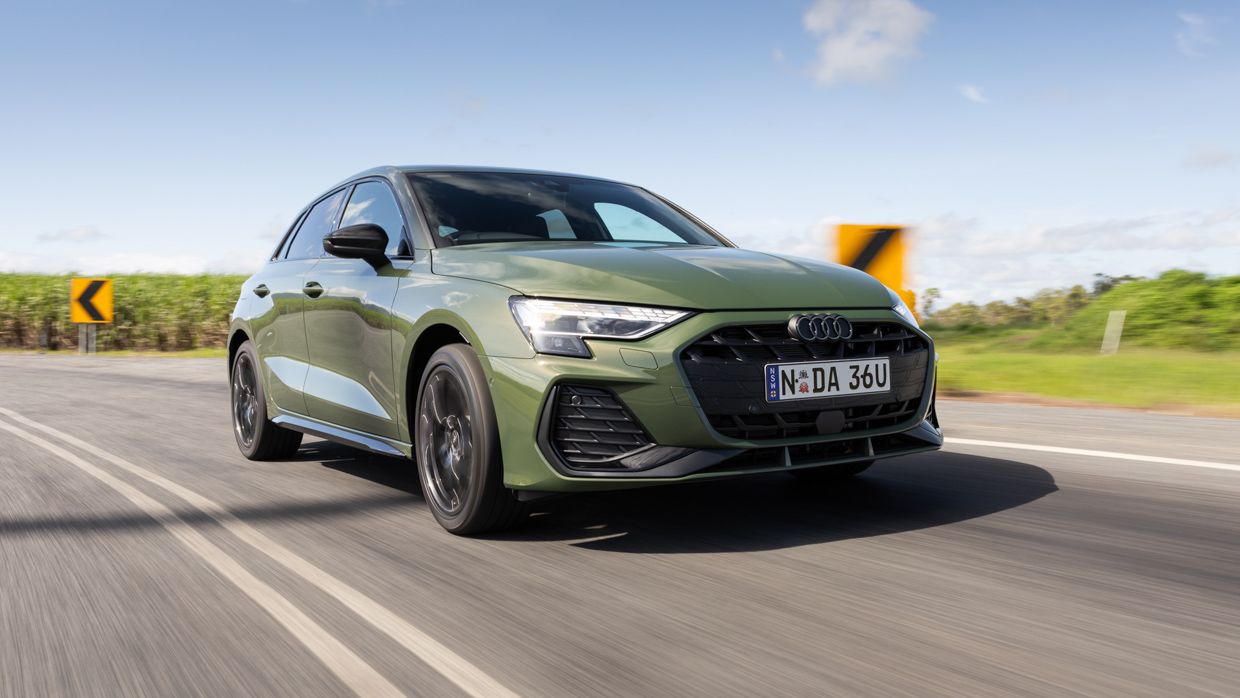
The strut front, multilink rear suspension is passively damped, with a nicely struck balance between a naturally compliant ride and assertive body control. Bar the occasional thud of dropping a low-profile 18-inch tyre into a pothole, it feels (and sounds) taut and composed.
In short, there is a premium sheen to the A3 lacking in some so-called semi-premium small offerings in our five-door Sportback tester.
The sedan, with its extra 348mm of overall length, ought to offer similarly fine ride and handling balance given it sits on an identical wheelbase (2630mm) and track widths and, at 1400kg kerb, weighs exactly the same.

The A3 is surprisingly keen in the corners, as evidenced across the wondrous mountain-climbing twisties west of Cairns, North Queensland, that slither up into the Atherton tablelands.
Even on modest 225mm Nexens, the A3 points, grips up and holds its line tenaciously. The speed-dependent power assistance of steering returns a decent amount of feel, but it’s the accuracy of the front end that does the small Audi considerable favours, making it quite a hoot to point and shoot.
There’s inherent athleticism in its dynamics and, on balance, it punches above its weight for what is an entry-level hatchback that, sporting stylings aside, is Audi’s answer to a grocery getter.
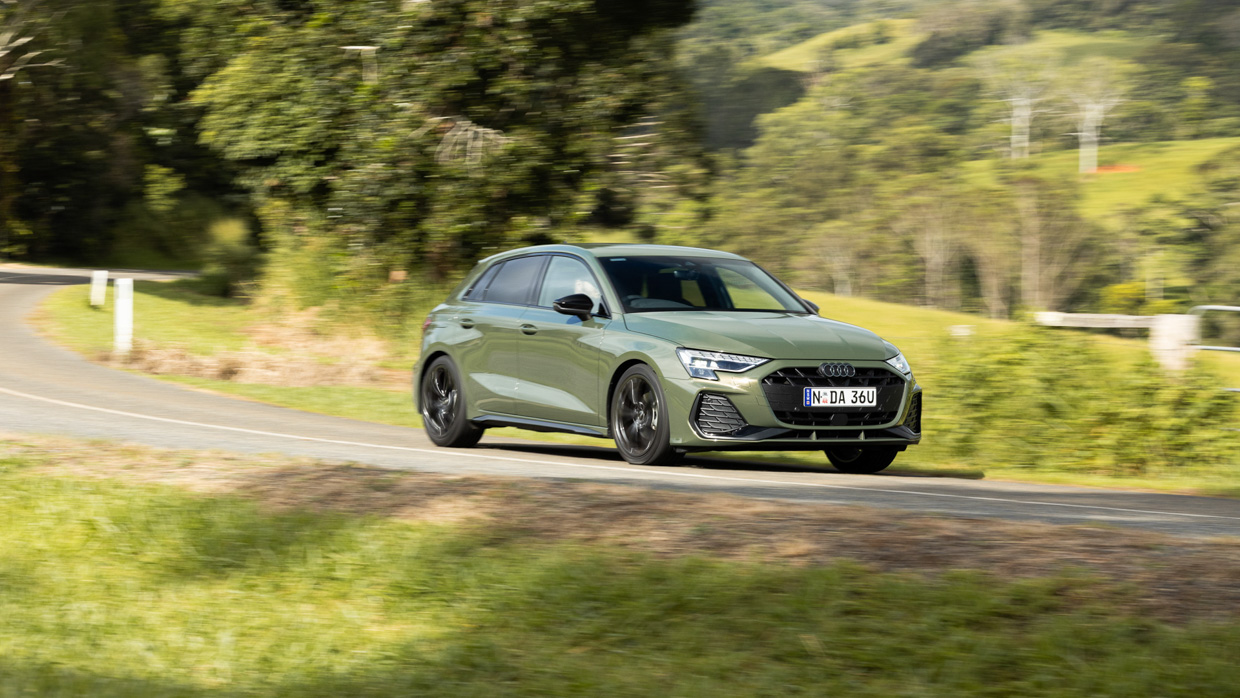
And right here is the A3’s problem. Audi’s actually stitched together a chassis worthy of the hatch’s (and sedan’s) S-like appearance and aesthetic vibe, and loaded in a mediocre engine that struggles to deliver the energy to let the rest of the package shine once the heat is turned up.
It just lacks poke: power up top, torque in middle where you usually need it most. When the chassis is just starting to flex its surprisingly able muscles, the little 1.5 turbo demands to be completely strung off its almost painfully short chain…when you’re having a decent punt, that is.
The A3’s truer colours shine brighter around town. The dual-clutch seven speed, the usually abrupt dry-type application, does a fine job of plucking the turbo four’s tractive best off the mark and with the ebbs and flow off traffic.

It’s responsive off the mark, modestly punchy on kickdown, and best served in S-for-sport mode, even down to the shops for milk. But for merging onto motorways, or overtaking at pace, the little 1.5 hits an accelerative wall all too soon. It feels about its 8.1sec 0-100km/h claim. Just.
But it is frugal. The A3 is advertised as a 5.3L/100km proposition and it’ll easily settle into the sub-sixes without sympathetic driving.
That’s pretty impressive given that it’s no hybrid…
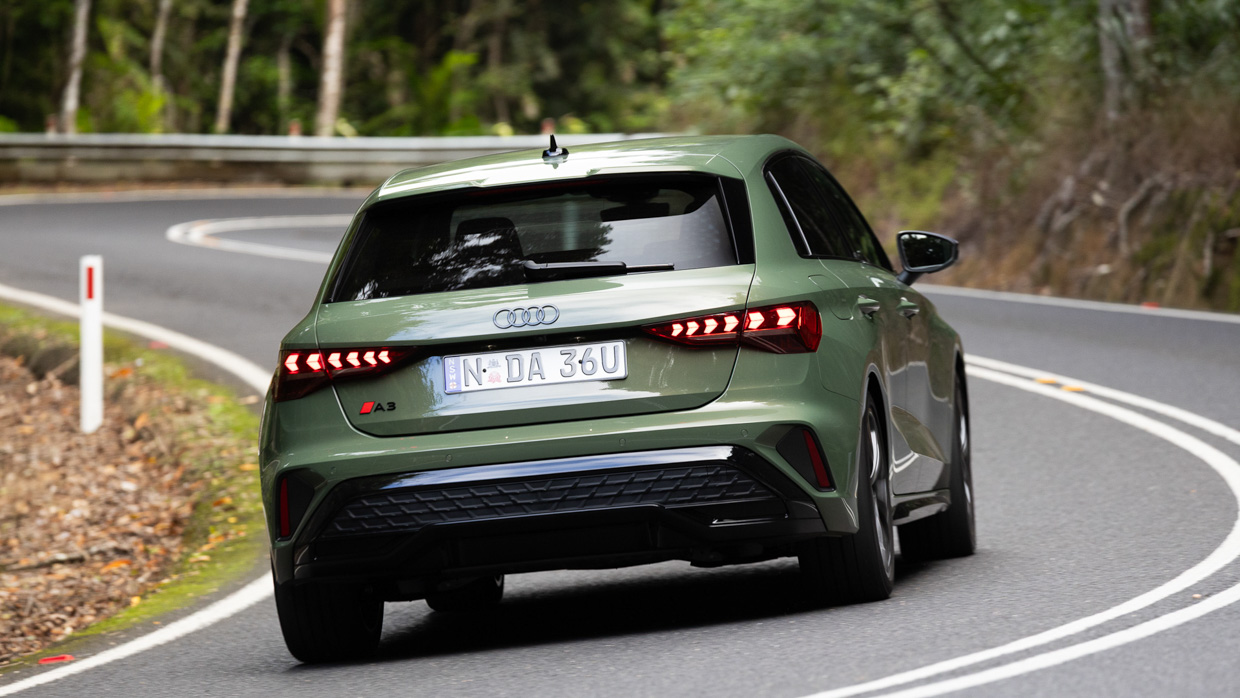
Audi’s been peddling its so-called ‘mild hybrid’ application for around a decade now. And while some technical interpretation of this oxymoron — hybrid means two things combined, of course — do introduce an electric motor drive augmentation somewhere within the driveline, the A3’s ‘MHEV’ simply does not.
There’s no electric motor. Thus, there’s no electric drive assistance. This ‘MHEV’ system never drives on electrons alone and, sans electric motor, nor does the powertrain seems to add electric torque in parallel with internal combustion anywhere within the driveline.
Instead, MHEV shuts the engine down with stop-start functionality under very specific conditions — near flat running, Comfort drive mode, sometimes — but the A3 never moves under electric propulsion.
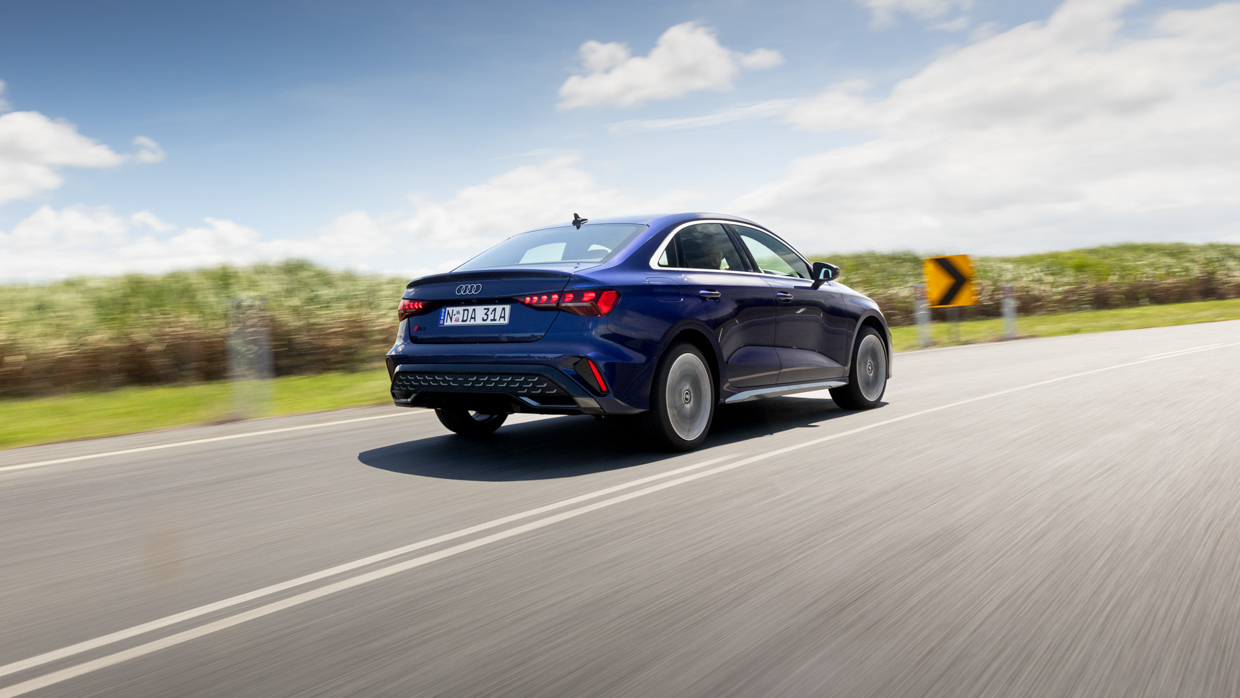
If the Audi did have a Benz-style EQ ‘mild hybrid’ effect, with a motor in the transmission, the A3 would benefit from the torque fattening effect the A3 clearly doesn’t have, but in many situations needs.
What is the A3’s interior and tech like?
Bury down to details and not a lot has changed to the A3 cabin in facelifted form: the centre console is redesigned — complete with sliding transmission selector — and the hexagonal air vents have been subtly restyled.
Elsewhere the updates are garnish, with illuminated door panels, and double-contrast stitching and new decor inlay for the dash fascia.

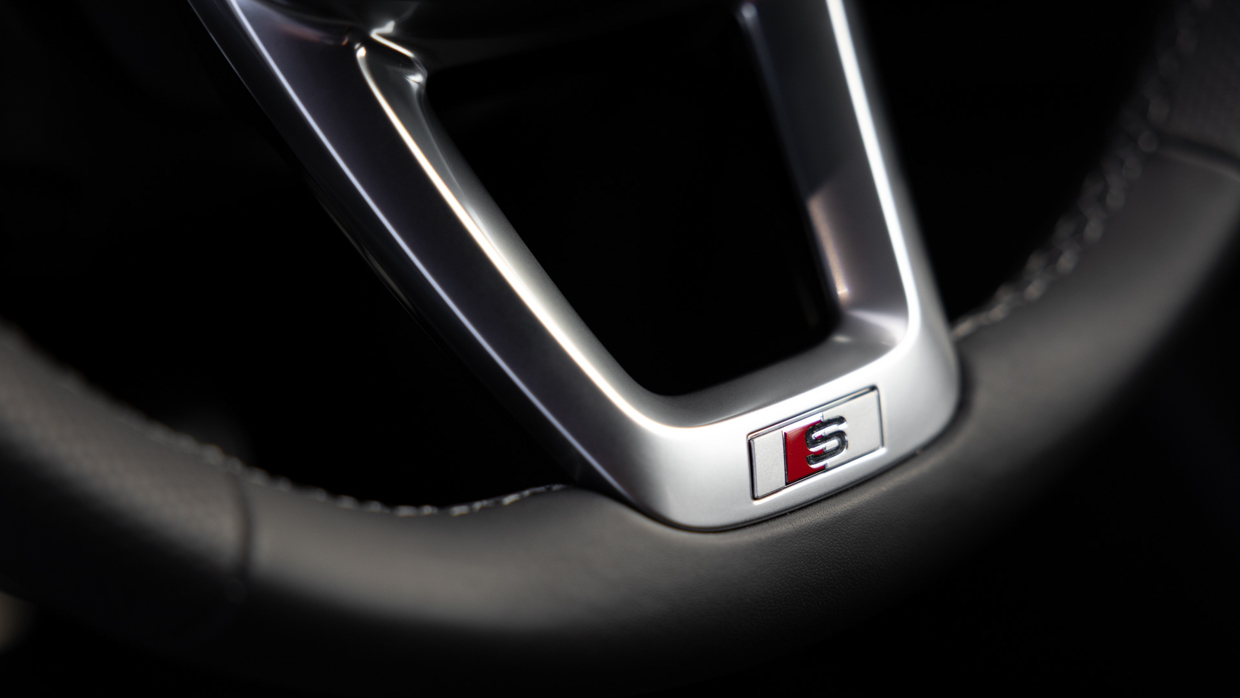
But the lathering of S Line accouterment that mints the vibe and brings the feel-good factor.
The bucket seats with integrated headrest are dead ringers for the go-fast S3 pews bar the cloth/leatherette trim that’s slightly dowdier than the big brother’s diamond-stitched Nappa leather pews. They’re comfy and racy, a neat compliment for the neat and thankfully round S Line wheel. No flat-bottoms here.
We sampled versions both with regular trim and with the leather-appointed option, and the $1000 upcharge for the latter is questionable. The four-way front-seat lumbar adjustment is ideal for fine-tuning comfort.

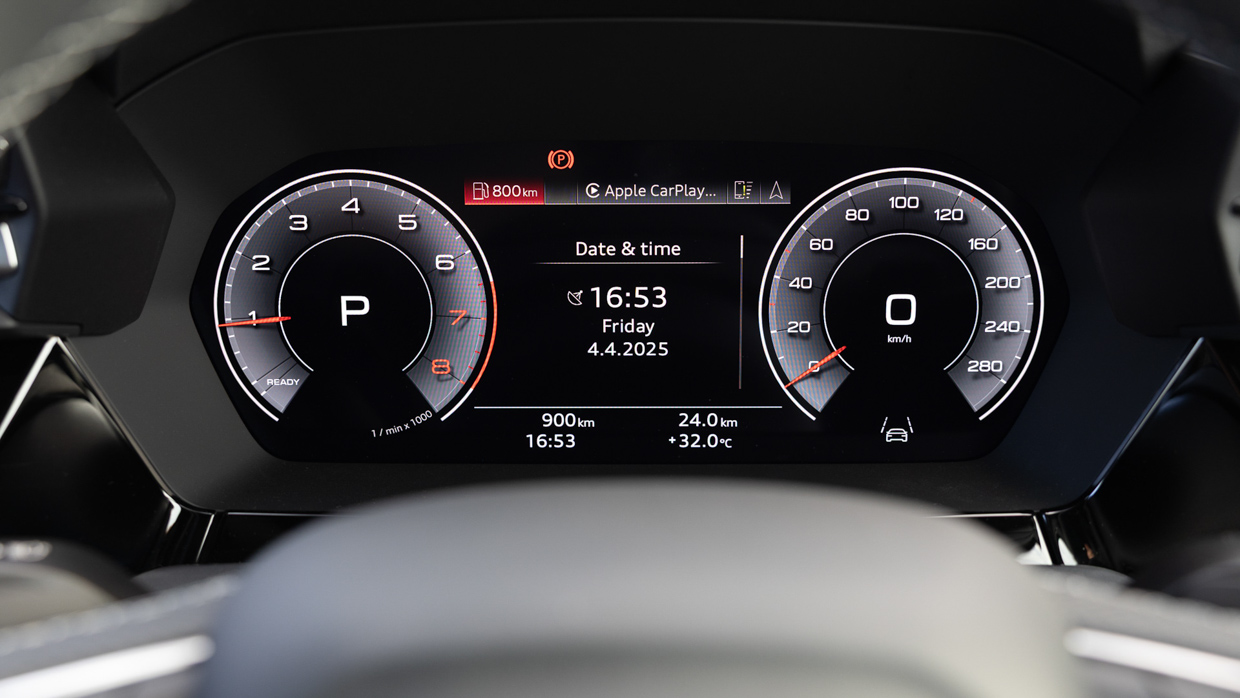
Add the digital instrumentation, now grown to 12.3 inches and up from pre-facelift 10.25in, and the window dressing is suitably fancy, with plenty of conspicuous tech blended together with a smattering of premium texture and details.
Still, some of the plastics are fairly mainstream — Golf-esque — in some obvious areas, such as the tops of the door cards. And the monochromatic dark grey, while suitably mature, lacks the sort of sumptuous bling found in Audi’s corporate cousin Cupra.
The cabin design is fancy to the point of overfussiness, with a strong asymmetric theme and driver-centric leaning, including the orientation of the 10.1-inch media screen.

Audi’s tech display work has had a bit of a glacial evolution and the display skins and software is starting to look a little dated despite ongoing updates to the MMi format. It’s still numbers heavy and even starting to look low-resolution compared to the finer, brighter tech coming out in Chinese vehicles.
But one key update is the introduction of Audi Apps, where buyers can now download the likes of YouTube. Wireless Apple CarPlay and Android Auto, as well as Qi-type inductive phone charging, are all accounted for, while a three-year Audi Connect Plus licence is complimentary, bundling connectivity for Google Maps, real-time traffic alerts and the like.
It’s acceptably roomy in both rows of seat, if in the rear not remarkably so. But the rear bench is quite comfy and rear passengers not only get dedicated third-zone climate controls — a proper premium touch — but a pair of USB-C ports that mirror the duo up front.
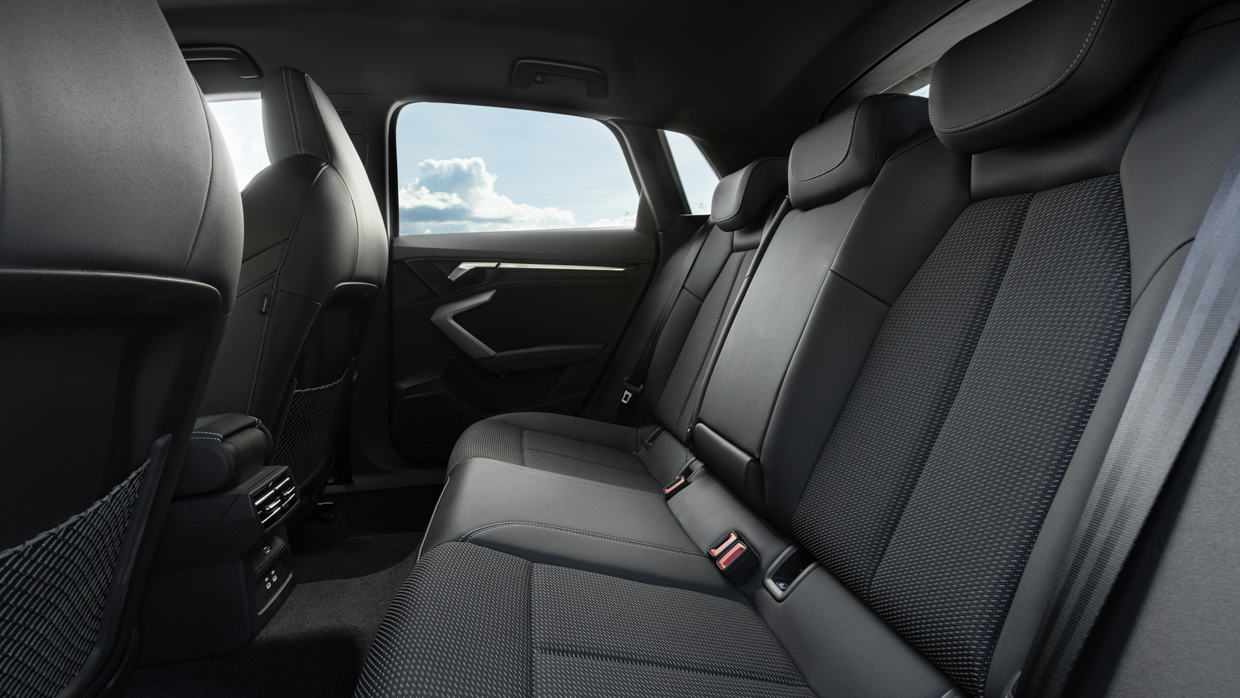
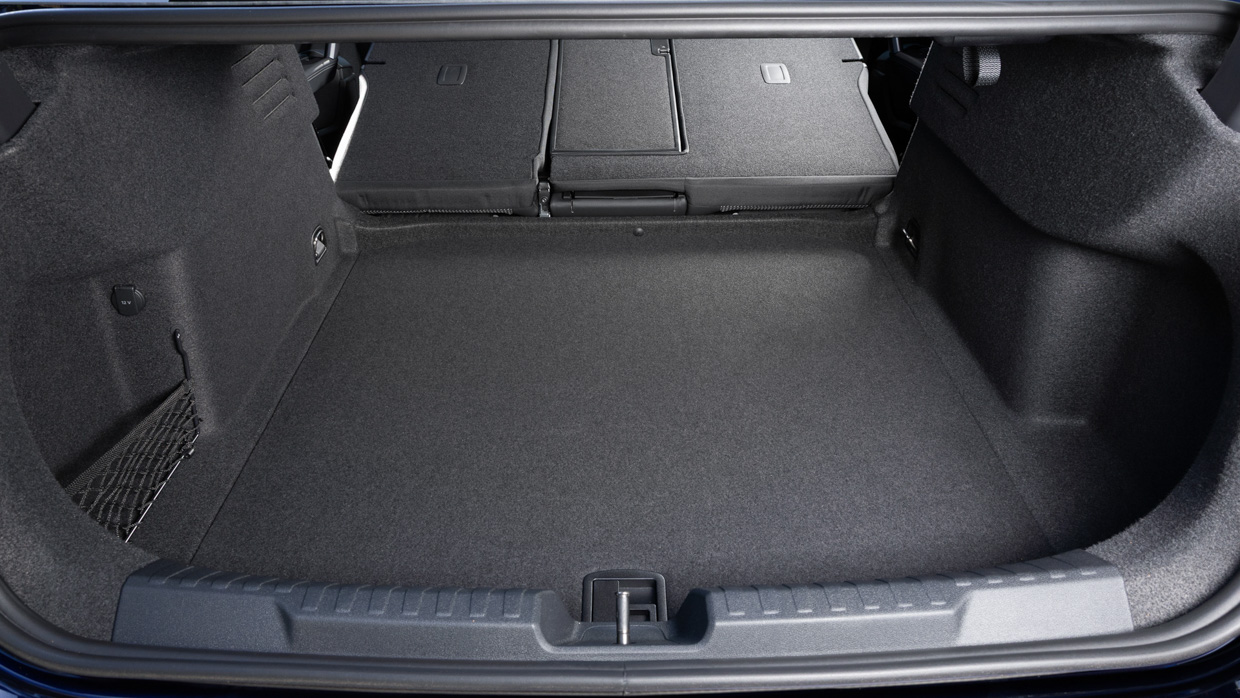
If anything, the (33mm taller) hatch feels slightly airier in row two than the sedan, though the four-door (425 litres) trumps the Sportback (380L) on boot space. However, the hatch is more practical given that its 40:20:40 split-fold seatback liberates a broader load-through space — 1200L as a two-seater — for lugging smaller pushbikes, furniture and the like.
The sedan gets gesture control standard, while it’s a $660 sting on the ($3000 more affordable) Sportback, while both fit space saver spare wheels.
Is the A3 a safe car?
The A3 carries over ANCAP’s pre-facelift five-star assessment date-stamped from 2020.
It scored 89 and 81 percent respectively for adult and child protection, with 68 for vulnerable road user protection and 73 percent for safety assist.
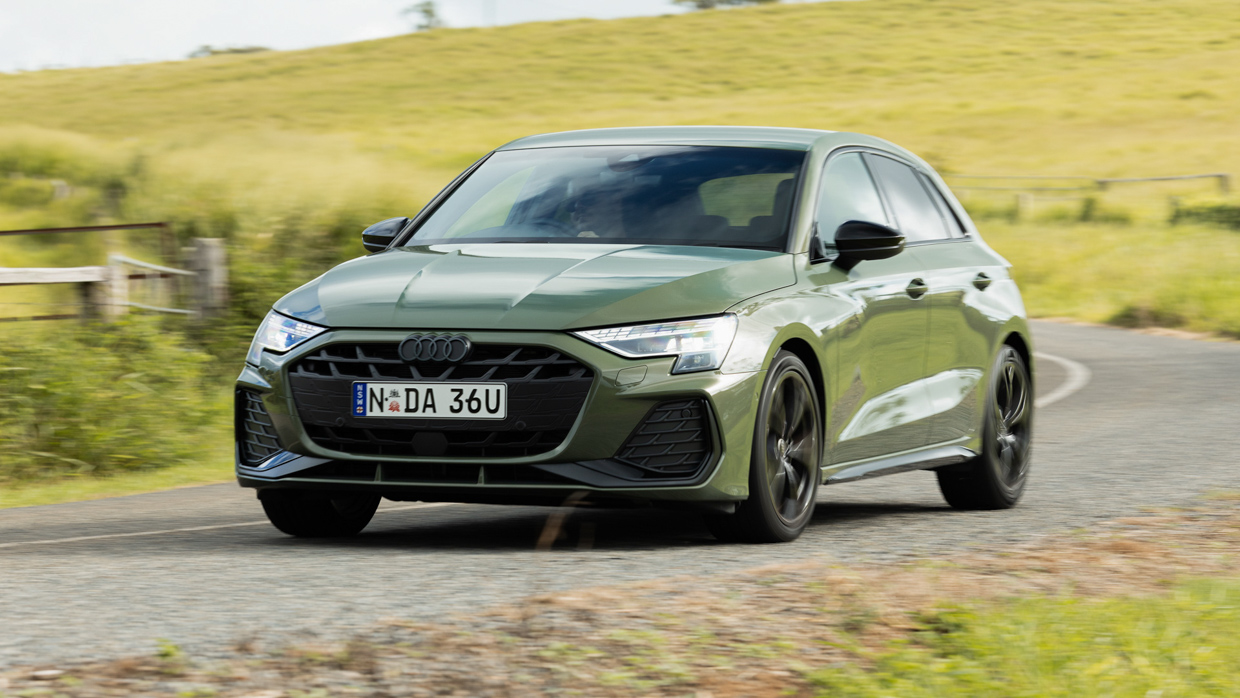
Features include:
- Forward AEB
- Lane departure warning
- Lane change assist
- Exit warning
- Park assist
- Turn assist
- Rear cross traffic alert
- Adaptive cruise control
- Front and rear parking sensors
- Reversing camera
- Side assist (blind spot warning)
- Exit warning system
The A3 fits six airbags, if with no front-centre airbag unit (which would impact A3’s ANCAP assessment under current 2025 protocols).
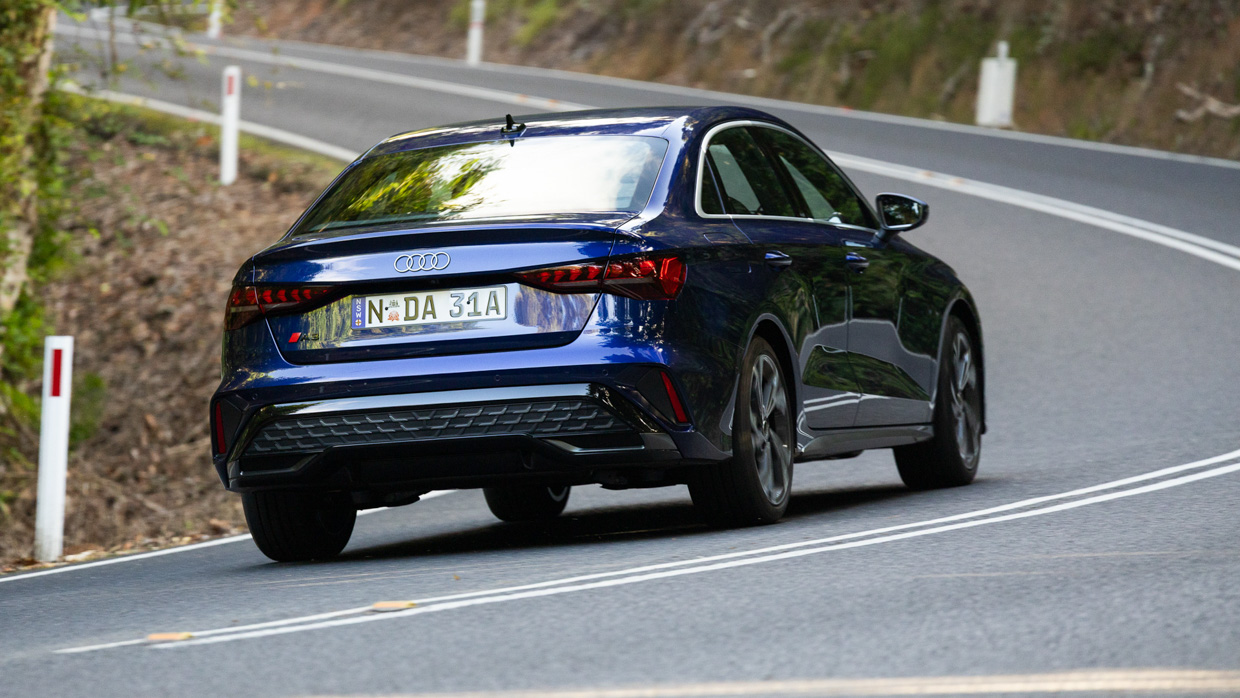
The two A3s we drove — one Sportback, one Sedan — were free of annoyance and foibles during our test. The lane keeping function arms on restart, but is easily switched off by holding down a button on the indicator stalk.
What are the A3’s ownership costs?
The A3’s demonstrated good circa 5.0L/100km fuel economy during our test.
However, the 110kW/250Nm 1.5-litre turbo engine does demand 95-octane petrol, which isn’t a good look when the likes of Hyundai offers a higher-output (132kW/264Nm) 1.6L turbo that drinks 91RON.

Audi offers a five-year service plan at a quite decent $2520, with servicing intervals of 12 months and 15,000kms.
The A3 is covered by Audi’s five-year unlimited-kilometre warranty, covered from the initial point of registration (rather than the time of purchase or delivery).
The honest verdict on the A3
Over four and half generations now, Audi has polished the humble A3 into a fine, accomplished small car, in a choice of two pleasing body styles, and in a ‘35’ powertrain trim that delivers where it needs to as an urban-centric commuter.
This facelift version is not merely one of the nicer and easiest-to-live-with small car options out there, it delivers good vibes inside and out with a sporting schtick, Audi says, so many Aussie buyers demand in 2025.
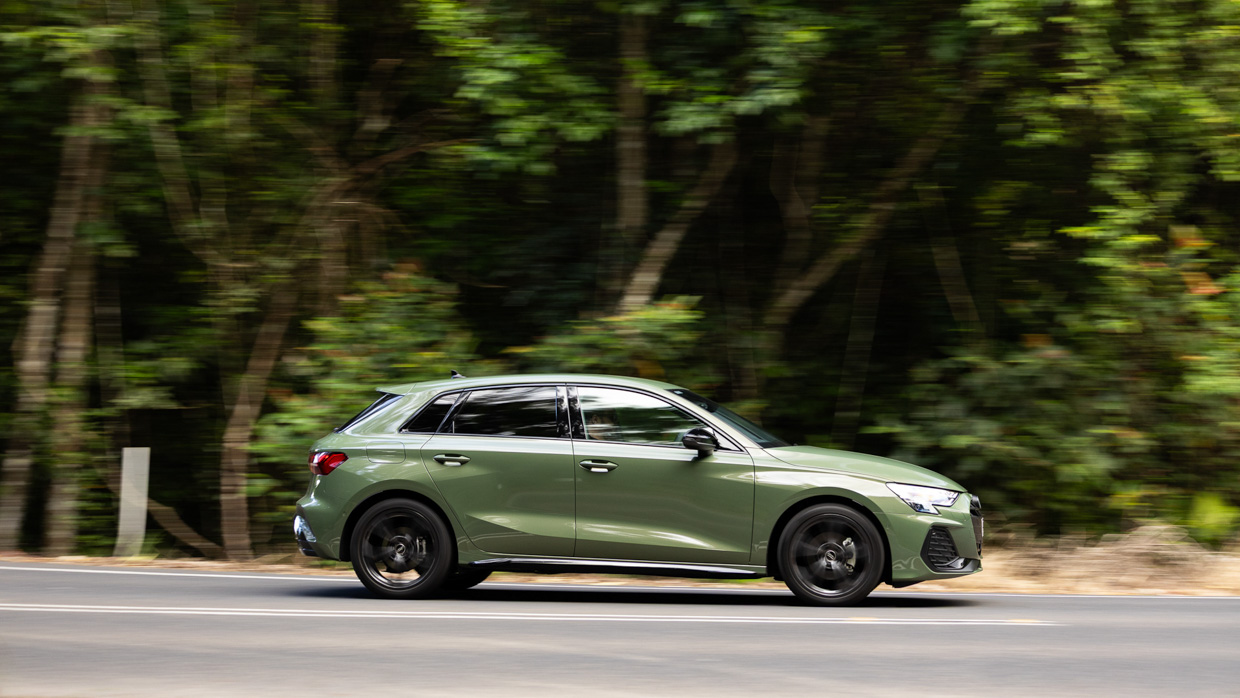
And yet, no matter how you cut it, this facelift is something of a step backwards for the A3.
The newcomer’s “$10K of added value” doesn’t really compensate for the A3 three-year $8500 price hike, mostly for stuff that used to be optional to taste but is now compulsory, whether you want that sporty schtick or not. There’s no regular A3 any more if that’s what you prefer.
The $54,800-$57,800 ask for A3 is dangerous territory for a small car that looks fast but really isn’t. That’s because it’s a slight lease adjustment away from actual hot hatches in the new Volkswagen Mk8.5 Golf GTI (195kW, $58,990) and Cupra Leon VZ (180kW, $56,990).
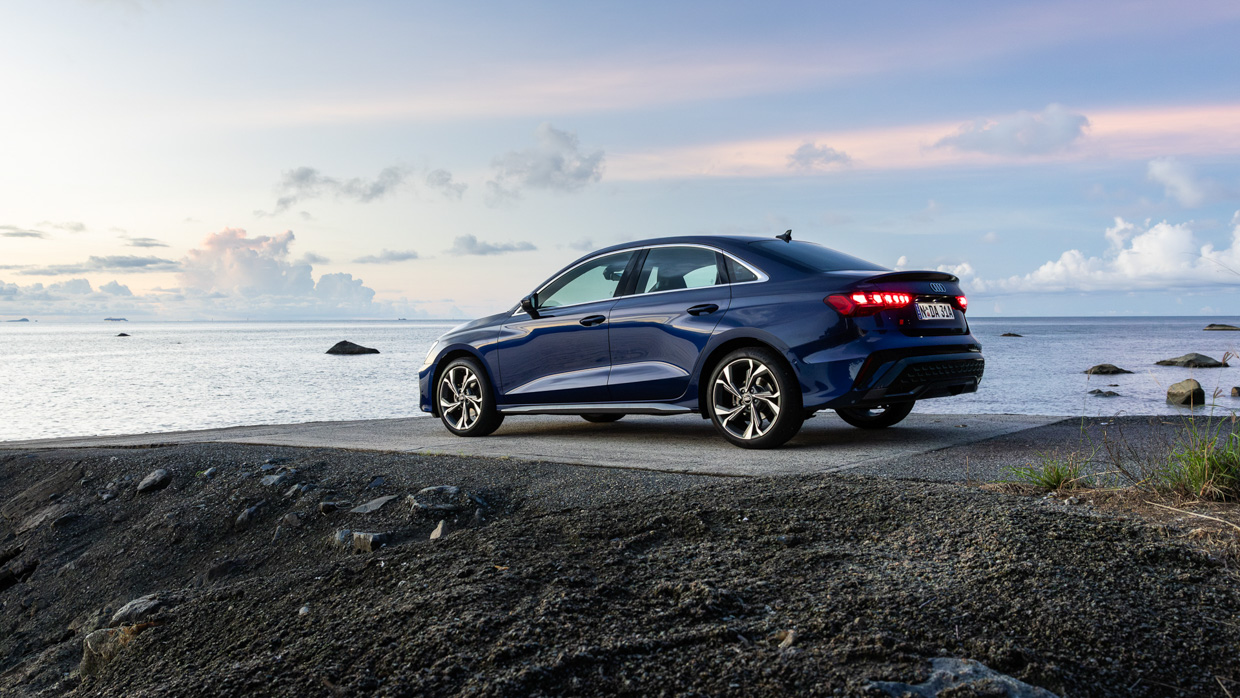
While lacking the badge cache, Hyundai’s 206kW i30 N Premium twins bring vastly superior performance for less (hatch at $53,500, sedan at $52k).
Despite its impressive dynamics, the A3 is patently a sheep in wolf’s clothing, playing at its price point of bona-fide wolves.
Audi had its own, if somewhat more passive, hound in the 140kW A3 40 Sportback, with S Line, quattro drive and a thriftier $52,900 price tag, that’s now absent from the line-up.

This leaves buyers who want the looks and the performance to stump up an extra $24,000 for the properly quicker — and significantly upgraded — newly face-lifted 245kW quattro-equipped S3 (from $78,800). Which, for many, is simply a fiscal lunge too far to enter the bona-fide fun zone.
But if you’re in it just for looks and handling…



